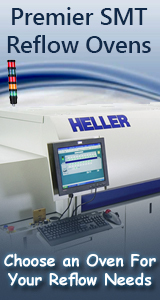Printed Circuit Board Assembly & PCB Design Forum
SMT electronics assembly manufacturing forum.
- SMTnet
- »
- Electronics Forum
- »
- Types of OSP Coating
Types of OSP Coating
Views: 5799
![]() Hi!
I am Syed from Hitachi located in Malaysia.It seems tha...
- Sep 06, 2007
by
Syed
Hi!
I am Syed from Hitachi located in Malaysia.It seems tha...
- Sep 06, 2007
by
Syed
![]()
![]()
![]() what type of solder paste are you using?
Why the concern ...
- Sep 07, 2007
by
RDR
what type of solder paste are you using?
Why the concern ...
- Sep 07, 2007
by
RDR
![]()
![]()
![]() We expect to see a copper shadow along the edge of pads when...
- Sep 08, 2007
by
davef
We expect to see a copper shadow along the edge of pads when...
- Sep 08, 2007
by
davef
![]()
![]()
![]() Dear Members,
Sorry,I might have not made myself clear on t...
- Sep 09, 2007
by
Syed
Dear Members,
Sorry,I might have not made myself clear on t...
- Sep 09, 2007
by
Syed
![]()
- SMTnet
- »
- Electronics Forum
- »
- Types of OSP Coating






